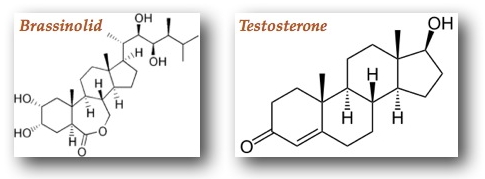Although, metals are natural components of the terrestrial crust, human activities such as mining and industrial activities enhance soil contamination by metals. Cadmium is one of the most toxic compounds released in the environment. Plants are sessile organisms that absorb water and minerals from soil. By competing with essential metals, cadmium accumulates in plant. This absorption constitutes a major threat to the environment, human and animals health.
In order to develop ambitious strategies for phyto-remediation processes, it is of importance to identify the mechanisms of tolerance and detoxification set up by the plant to fight this stress and the cascade of reactions involved in the signaling of that stress. In order to regulate their growth and development, plants use hormonal regulators also involved in the mechanisms of adaptation to environmental stresses.
To highlight if hormonal signaling was involved in the response to metal, the researchers from our Laboratory compared gene expression data of plant in response to various hormonal treatments (available in
Genevestigator database) with available DNA microarray data obtained in response to cadmium
[1]. From a pool of 3,000 genes regulated in response to cadmium, these researchers have shown
[2] by statistical approaches and cluster analyzes, a very great similarity between gene regulation in response to metal and with a hormone of the brassinosteroids family (BR). The BRs are often compared to human steroid hormones (
Figure) and are involved in cell division and elongation. In parallel, they were able to observe that any addition of hormone in the culture medium increased the toxicity of cadmium. On the contrary the plant becomes more tolerant to metal stress when the synthesis of BR is inhibited by the use of a specific inhibitor for a key gene,
DWARF4, involved in the biosynthesis of BRs.

Structural homologies between the first isolated brassinosteroid (brassinolid) and testosterone, a steroid hormone.
Taken together, these results suggest a functional interaction between cadmium and the brassinosteroids signaling pathway that modulates plant sensitivity to the metal and opens new perspectives for a better understanding of the plant response to cadmium.